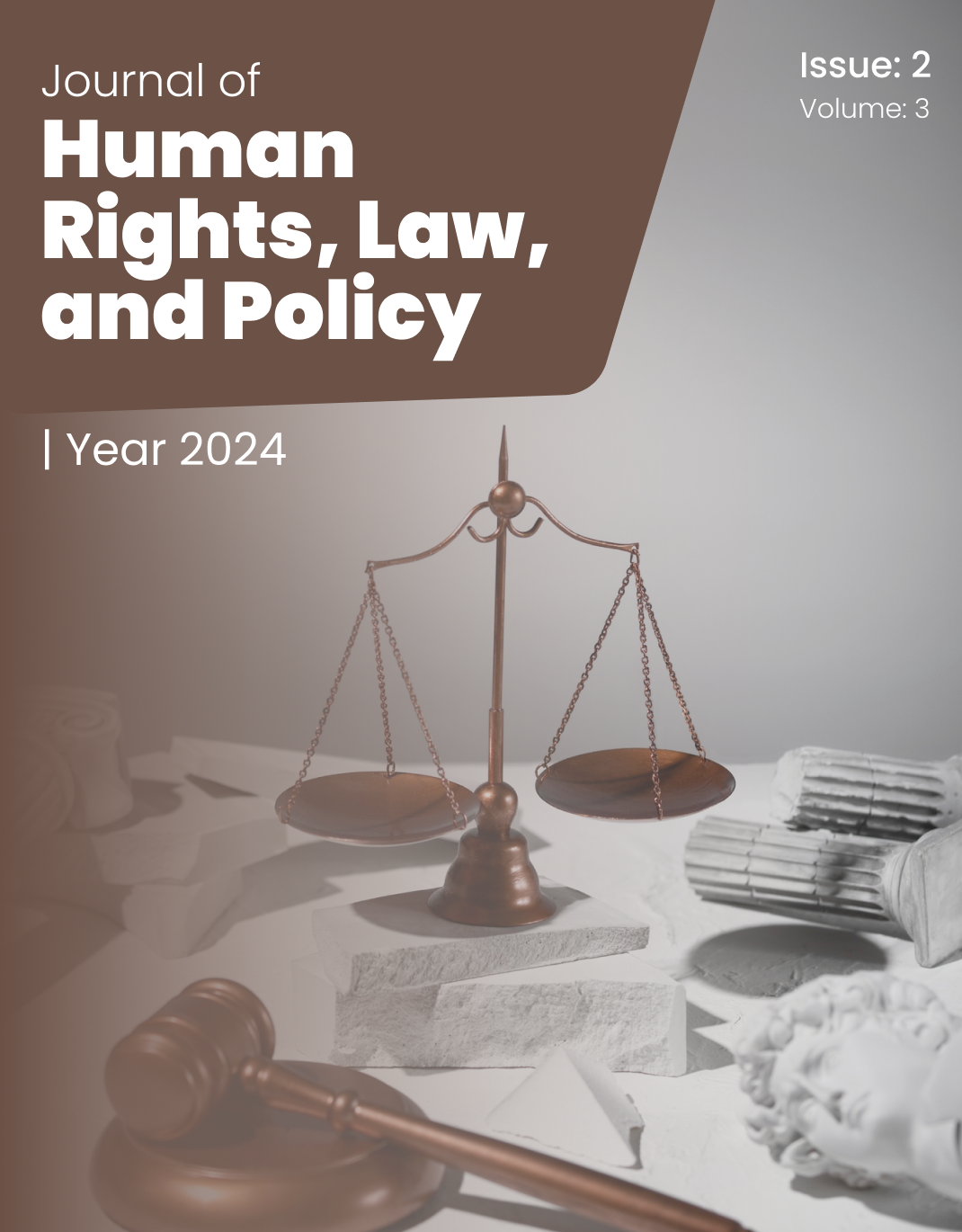The Role of Law in Shaping Youth Political Engagement: A Case Study Approach
Keywords:
Youth political engagement, legal consciousness, semi-authoritarian regimes, civic participation, qualitative research, Tehran, legal repression, digital activismAbstract
This study aims to explore how legal frameworks influence the perceptions, strategies, and behaviors of youth regarding political engagement in Tehran, Iran. This qualitative research employed a case study approach, utilizing semi-structured interviews with 20 participants aged 18–30 residing in Tehran. Participants were selected through purposive sampling to ensure diversity in political orientation, civic involvement, and legal awareness. Data collection continued until theoretical saturation was achieved. All interviews were audio-recorded, transcribed verbatim, and analyzed using NVivo software. Thematic analysis was conducted through an iterative coding process, including open, axial, and selective coding, to identify patterns and categories within participants’ experiences. Ethical protocols, including informed consent and anonymity, were rigorously maintained. Analysis revealed four main themes: (1) legal awareness and political identity, (2) barriers to legal participation, (3) law as an enabler of engagement, and (4) navigating legal ambiguity. Participants demonstrated varying degrees of legal knowledge, often relying on informal sources such as social media or peer networks. Legal uncertainty, fear of prosecution, and institutional distrust were significant deterrents to formal political involvement. However, youth also employed creative strategies to engage politically, such as symbolic protest, digital activism, and peer-supported risk management. Civil society organizations and digital legal tools emerged as key mediators of legal knowledge and empowerment. Despite constraints, law also served as a source of legitimacy and a framework for moral reasoning in political action. The study underscores the dual role of law in both restricting and enabling youth political engagement in semi-authoritarian contexts. Legal consciousness among youth is shaped through complex interactions with state institutions, civil society, digital media, and intergenerational knowledge. Promoting accessible legal education and youth-inclusive policy reforms is essential for enhancing civic participation.
Downloads
References
Bayat, A. (2010). Life as politics: How ordinary people change the Middle East. Stanford University Press.
Ewick, P., & Silbey, S. S. (1998). The common place of law: Stories from everyday life. University of Chicago Press.
Flanagan, C. A., & Levine, P. (2010). Civic engagement and the transition to adulthood. The Future of Children, 20(1), 159–179. https://doi.org/10.1353/foc.0.0043
Fregonese, S. (2017). Digital resistance and legal ambiguity in youth activism. Urban Studies, 54(10), 2270–2286. https://doi.org/10.1177/0042098016663850
Gallagher, N. (2017). Youth and politics in Iran: From second to third generation. Cambridge University Press.
Gordon, H. R., & Taft, J. K. (2011). Rethinking youth political socialization: Teenage activists talk back. Youth & Society, 43(4), 1499–1527. https://doi.org/10.1177/0044118X10386087
Human Rights Watch. (2022). Iran: Events of 2021. Retrieved from https://www.hrw.org/world-report/2022/country-chapters/iran
Isin, E. F., & Ruppert, E. (2020). Being digital citizens. Rowman & Littlefield.
Keshavarzian, A. (2009). Regime loyalty and reform in Iran: State and society in the Islamic Republic. Politics & Society, 37(3), 426–429. https://doi.org/10.1177/0032329209338182
Merry, S. E. (2006). Human rights and gender violence: Translating international law into local justice. University of Chicago Press.
Neundorf, A., Smets, K., & García-Albacete, G. M. (2013). Homemade citizens: The development of political interest during adolescence and young adulthood. Acta Politica, 48(1), 92–116. https://doi.org/10.1057/ap.2012.20
Sadeghi-Boroujerdi, E. (2019). Revolution and its discontents: Political thought and reform in Iran. Cambridge University Press.
Silbey, S. S. (2005). After legal consciousness. Annual Review of Law and Social Science, 1, 323–368. https://doi.org/10.1146/annurev.lawsocsci.1.041604.115938
Sloam, J. (2014). New voice, less equal: The civic and political engagement of young people in the United States and Europe. Comparative Political Studies, 47(5), 663–688. https://doi.org/10.1177/0010414012453441
Taft, J. K. (2011). Rebel girls: Youth activism and social change across the Americas. NYU Press.
Tilly, C., & Tarrow, S. (2015). Contentious politics (2nd ed.). Oxford University Press.
Treré, E. (2019). Hybrid media activism: Ecologies, imaginaries, algorithms. Routledge.
Downloads
Published
Submitted
Revised
Accepted
Issue
Section
License

This work is licensed under a Creative Commons Attribution-NonCommercial 4.0 International License.

